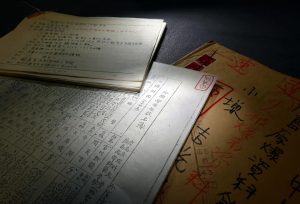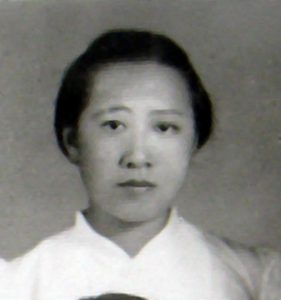Details to be revealed of 12 former Hiroshima University students from mainland China who experienced atomic bombing
Dec. 1, 2022
Former Chugoku Shimbun reporter will introduce full extent of research on December 3
by Michiko Tanaka, Senior Staff Writer
Some of the details regarding 12 students from mainland China who experienced the atomic bombing of Hiroshima on August 6, 1945, have come to light. The students were from Manchukuo (now part of northeastern China), a territory that was ruled by the former Imperial Japanese Army, with six of the students dying in the atomic bombing. Of the six survivors, Dingyu Zhu remained in Japan and died in 2019 at the age of 97, and only Dawen Wang, 97, is alive and living in Nanjing as the last surviving member of the group.
The 12 students studied at the Hiroshima University of Literature and Science (now Hiroshima University) and the Hiroshima Higher Normal School. Eight students were from the region known as Manchukuo. The remaining four were from a pro-Japanese government established in areas ruled by the former Japanese military and from local governments in Inner Mongolia. Masami Nishimoto, 66, a former Chugoku Shimbun reporter, was able to confirm lists from 1943 of overseas students for both schools and other forgotten historical materials. Checking against related paperwork, Ms. Nishimoto confirmed the names and university departments of all the students, as well as their lives after the atomic bombing.
Among the six students killed in the atomic bombing, three from Manchukuo and other areas went to the Hiroshima University of Literature and Science and two attended the Hiroshima Higher Normal School. One of the six was a student at the Hiroshima Higher Normal School from Inner Mongolia. The six are assumed to have experienced the atomic bombing close to the hypocenter at the time of the bombing — at dormitories in the areas of Sakaimachi and Nekoya-cho in the city’s present-day Naka Ward, a school building in the area of Higashisenda-machi, or on their way to school.
One photograph was found of Guiwen Zhao, then 26 from Manchukuo, who started attending the Hiroshima Higher Normal School in 1944 after graduating from Nara Women’s Higher Normal School. Ms. Zhao is thought to have experienced the bombing at a school dormitory for young women in Nekoya-cho, but her remains have never been found.
Four of the six surviving students returned to their own countries between 1950 and 1952, and all ended up teaching at the university level. Records show that one student of Korean ethnicity from Manchukuo graduated from the Hiroshima Higher Normal School. However, information about that student’s life after the bombing is unknown. Ms. Zhu, who remained in Japan and started a family in Saitama Prefecture, participated in a video recording produced by the Hiroshima Peace Culture Foundation in 1990 of A-bomb survivor testimonies.
Satoru Ubuki, 76, a former professor at Hiroshima Jogakuin University and a researcher of materials involving the atomic bombing, praised Mr. Nishimoto. “He has dug up a detailed trove of historical records that were underfoot, uncovering information of the most detailed kind.” Mr. Ubuki added, “In remembrance of the students, efforts led by Hiroshima University to determine the reality surrounding the atomic bombing for such overseas students should continue. Such information could be an asset shared by Japan and China in the future.” At a meeting of civic organizations to be held on December 3 at the Hiroshima Peace Memorial Museum, located in the city’s Naka Ward, Mr. Nishimoto is scheduled to introduce the full extent of his research.
(Originally published on December 1, 2022)









